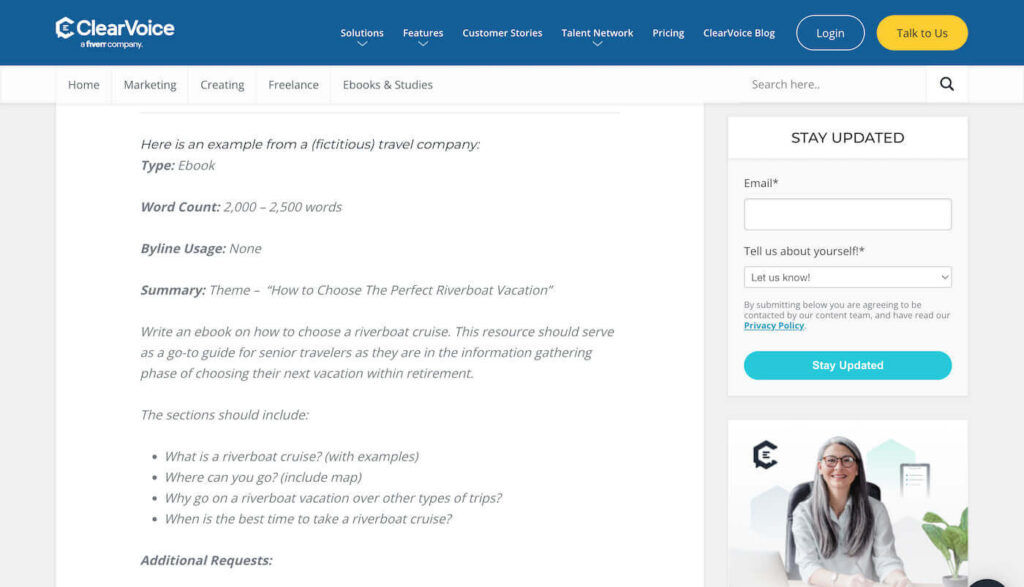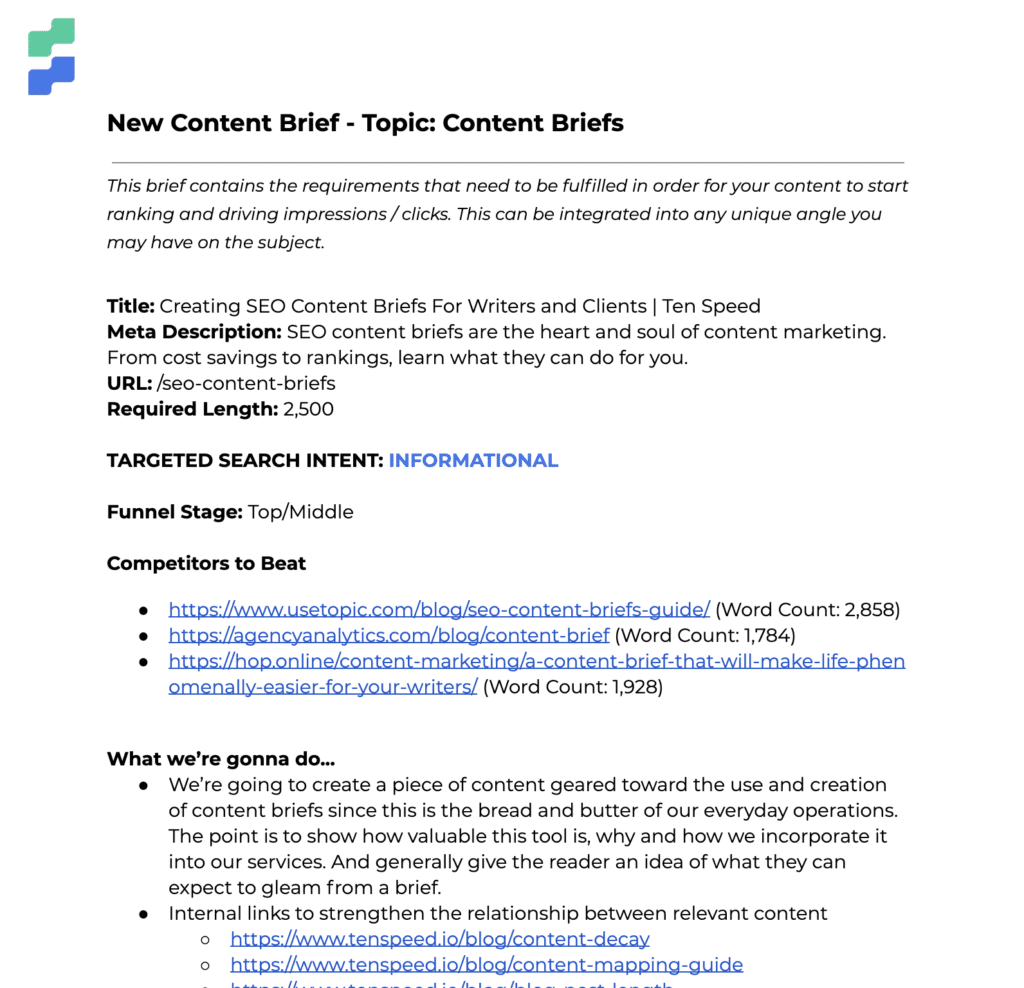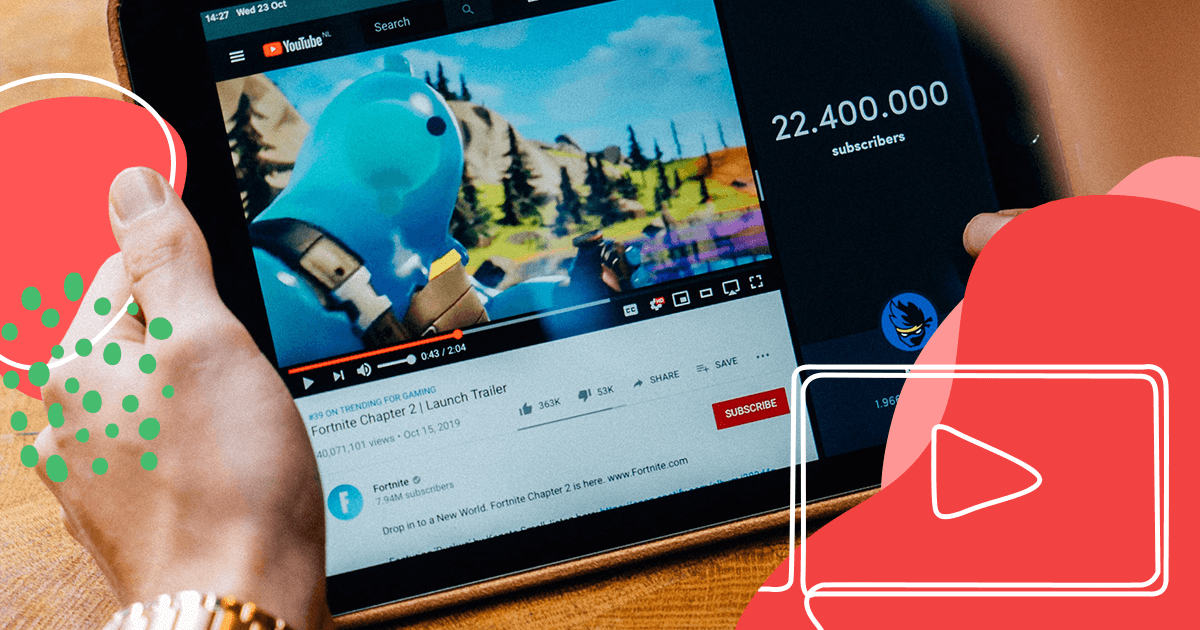Excellent SEO content doesn’t just happen. It’s the result of careful planning and methodical, goal-driven work.
Of course, having a team full of great writers and content producers who can be counted on to deliver consistent quality, again and again, is part of that.
But even great content writers need clear, concise directions to work from if they’re going to do their jobs properly.
A well-written SEO content brief helps save you and your writers a fortune in time, effort, and resources by ensuring things are done right the first time.
Here’s a closer look at what you need to know to create examples that are everything they need to be to get you results.
What is an SEO Content Brief?
An SEO content brief is a concise write-up designed to clarify the production of a piece of SEO-focused content.
Creating the brief can help marketers and business owners organize their thoughts and ensure everything essential is covered.
Receiving and working from the brief helps your content creators better understand what you need and how you’d like it done.
Although no two content briefs will be exactly alike, all must include the key elements the piece will need in order to meet standards. Examples include:
- Word count
- Target keywords
- Tone or brand voice
- Subtopics
- Headings
- Target customer personas
Why Does an SEO Content Brief Matter?
Without an explicit, cohesive content brief to work from, your content creators are left guessing what you really want. And even a highly-skilled, very experienced creator can easily get it wrong.
A good SEO content brief helps streamline content production projects by:
Improving Consistency
When you manage a large team of writers and other content producers, it takes organization to ensure consistent quality and a cohesive brand voice across all channels. Content briefs help guarantee this and eliminate any possible misunderstandings.
Reducing Production Cost
Without proper direction, the chances of a writer or other content creator getting things right on the first try are slim. Multiple rounds of revisions and rewrites can quickly put a project over budget and past the deadline, not to mention prove frustrating for all.
Boosting Effectiveness
Doing your own keyword research and setting corresponding requirements yourself instead of leaving it up to content creators who may not be fully SEO-literate can drastically increase the efficiency of your content.
How to Create an SEO-Focused Content Brief
An SEO-focused content brief contains all the same elements an ordinary brief would have — like the general topic, key points to hit and basic research requirements.
However, it also contains additional details meant to help the finished piece answer the audience’s questions and rank well for target search terms.
The following are some key elements every good SEO content brief should have.
1. Target Keywords
The primary purpose of any piece of SEO content is to help your site achieve a high SERP rank, drive relevant traffic, and expose your brand to a specific target audience.
Results like those always start with well-chosen keywords.
You likely already have a primary keyword chosen via your keyword research efforts, and it’s crucial to include that in your brief. However, you may also wish to add a few secondary keywords to give the content additional direction and context.
2. Word Count Range
Content length can be a critical ranking aspect when it comes to SEO content, and your content creators need to know what ballpark you’d like them to shoot for.
Knowing how long a piece needs to be in its entirety makes it easier to plan the content correctly from start to finish.
Your ideal content length depends largely on what you’re writing about and what type of content it is.
Some people champion shorter posts, especially for blogs designed to sell a particular product or service. But in-depth posts meant to educate, instruct, or enlighten generally perform better when they’re longer.
Between 1500 and 2000 words is a good benchmark to shoot for with such content.
3. Content Outline
A basic content outline is a must for each piece of optimized content you have your writers create.
Just as a blueprint helps a contractor build a house that’s exactly what the future homeowner wants, a content outline helps a writer craft SEO content that gets every detail correct.
Essential elements to include in a content outline include:
- A working title containing your primary keyword.
- H1, H2, and H3 headings that show the writer what to cover and in what order.
- Key takeaways for each section to help the writer stay on topic.
- A call-to-action to help the audience determine what to do next.
4. Target Audience
No SEO content brief is truly complete until it accurately identifies the target audience for the piece. (You may wish to consult your collection of buyer personas to settle on the right choice.)
What demographics do your potential readers belong to? What are they looking to learn from reading this content and why?
You’ll also want to think about where your ideal reader is within your sales funnel.
If they’re toward the top of the funnel (TOFU), the content should be looking to inform, educate, and raise awareness. However, mid-funnel (MOFU) or bottom-funnel (BOFU) targets will need more detailed, precise information to help them finalize their purchase decision.
5. Brand Voice and Style
Read much SEO content from any big brand, and you’ll notice a distinct brand voice emerging.
This is the case even though its content is probably generated by an entire team of content writers and creators. That’s the magic of a thorough SEO content brief at work.
Including details as to your company’s brand voice and preferred writing style helps each writer nail the tone, choose the right words and do everything they need to do to help their writing fit in with your existing content.
6. Goal Action
Remember, all SEO content is really just a means to an end.
The ultimate goal is for that content to lead to relationships, connections, and actions that help you meet your goals and boost your bottom line.
That said, each SEO content brief should include a target action you’d like its future audience to complete.
Maybe you want them to sign up for your newsletter or request a free copy of an ebook. Or perhaps you’d like them to explore a free trial or follow you on social media.
Whatever it is, clarify it with a clear call-to-action that appears in your brief.
(Speaking of newsletters, are you subscribed to ours?)
Associate with White Label SEO solutions
There is also an extra possibility, and it is becoming an agency to manage all your clients with good content and SEO services.
Being this your case, how about starting or expanding your services, by getting in touch with us to become a partner with White label SEO.
This way you provide SEO services to your customers, but without the need to hire specialized staff, invest in individual tools, or learn SEO from scratch.
In fact, did you know you can commission SEO briefs in WriterAccess? Yes, our freelancers can do all the hard work for you. Learn more about our features and services by starting our trial for free!
What to Avoid When Writing SEO-Focused Content Briefs
Of course, it’s just as important to know what not to do when preparing SEO content briefs. The following are some common pitfalls to keep in mind as you put yours together.
1. Over-Prioritizing Keyword Search Volume
Although a high search volume is nothing to sneeze at when evaluating keyword options and deciding which ones to include in your brief, you don’t want to prioritize volume over search intent.
Remember, the idea is to attract people who are right for your products and services — people with a high chance of actually converting.
2. Blindly Trusting Keyword Tools
While a great keyword research tool can be an absolute godsend when it comes to content planning, it’s important not to see them as flawless indicators of current search demand.
For example, some tools are updated more frequently than others, so there’s always a chance you’re not looking at the latest data.
Instead of over-relying on your tools and blindly trusting what they say, be sure to cross-check your suggestions with a tool like Google Trends for a better read on the latest information.
3. Having Writers Over-Focus on Keywords
Yes, your SEO content brief should include any primary and secondary keywords you’re looking to target.
However, it’s essential not to instruct your writers to make including your key phrases a specific number of times their primary focus.
You’ll have much better luck getting your content to rank if it accurately answers a question or addresses a concern your audience has as it relates to your keyword.
4. Providing Optimization Suggestions After the Fact
One thing many marketers get wrong about directing a team of writers and content creators is the optimal time to offer suggestions related to intent, target queries, or critical key phrases. It’s not after the content is already written.
Keep in mind that Google is getting smarter all the time, so it’s not enough to simply stuff a target query into your content somewhere.
Content is infinitely more effective and reads much better when it’s crafted to fit the intent in the first place.
Content Brief Examples
When you’re looking to get the hang of something new, effective content brief writing included, there’s nothing like a few good examples to help things fall into place.
It can also be helpful to have something to start with (other than an intimidating blank page), and a content brief template can be a big help. Here are a few great templates that work to get you started in the right direction.
Blog Post Briefing

Successful blog posts do more than convey information to a reader. They also make the information accessible, drive traffic to the website via solid SEO, and underscore the company’s brand voice.
This brief helps blog post writers accomplish all those things by clearly explaining crucial details like the following:
- What the topic is and how it should be addressed.
- Who the content targets.
- What key points the content should include.
- What the reader should be directed to do next.
SEO-Focused Briefing
Naturally, some content will primarily be about driving traffic, improving a site’s SEO, or both. When this is the case, it’s essential to understand how to write briefings with these focuses.
A terrific SEO content brief always starts with a fresh round of keyword research. It also provides the content writer with a concise list of primary and secondary keywords.
Good SEO briefs include additional details to help the writer tailor the content to your goals. The following are excellent examples:
- H2 and H3 tags to include (and in what order).
- Required word count range.
- Internal and external links to include.
- Desired anchor text for links.
- SEO titles and meta description info.
- A list of competing content pieces to check out.
- Desired references you’d like the writer to use.
E-Book Briefing

E-books are like long-form blog articles in that they dig deeper into topics of interest for curious information seekers. Many companies even sell them as digital resources or as free rewards for completing a call to action, so they need to be very thorough.
For that reason, an adequate e-book brief needs to be specific and should cover details like the following:
- The purpose of the content.
- Final due date (and any additional milestones, if applicable).
- What the final product will be used for, and where it will be published?
- The target audience and what their key pain points are.
- Your company’s ideal end goals for the content.
Feedback from Writers for Better Content Briefs
The better and more effective your content briefs, the more effective writers you hire can be regarding the content services they offer. Here are some tips for creating effective briefs from the writer’s point of view.
Strike the right balance between informative and concise.
Naturally, a good content brief doesn’t leave much up to chance. It tells the writer everything they need to know to write the piece effectively, including word count, target audience, keywords, links to include, and so forth.
However, there’s such a thing as too much information. Bloated or overstuffed briefs with directives can make writers feel overwhelmed and like they have no creative freedom, potentially causing their work to suffer.
Make sure you cover SEO.
Although many freelance copywriters and content writers have some SEO knowledge, most need to be professional SEO experts. A brief must explain how a client wants their piece optimized.
Always include details about primary and secondary keywords, links you want used, anchor text, etc.
Provide a content outline.
Outlines are incredibly helpful to writers, as they tell them precisely what points you want in your piece and in what order. They also explain how the finished piece should look on the page once written.
Great outlines break the longer piece into sections with suggested headings and subheadings. Not only does doing this make the writer’s job more accessible, but it also ensures that the finished work will help you achieve your marketing goals.
Don’t forget a clear call to action.
Consumers want to be told what to do next once they’ve finished reading a piece of content, so a clear call to action is desired and expected. Many writers know this and may think to include one on their own, but it’s up to you to tell them what it should say.
What do you ideally want the reader to do when they reach the end of your content? Do you want them to finalize a purchase, sign up for a mailing list, read additional content, or something else entirely?
Provide helpful references.
Examples are beneficial to writers when it comes to the creative process. So if you have specific references you would like them to use, please provide them. Links to competing content on similar topics are beneficial, as well.
Tools to Help You Create Great Briefings
You already use content optimization tools to help streamline your workflow. Many also have features that help with the creation of compelling content briefs. Here are some examples to consider.
Surfer SEO
Surfer SEO is more than just a terrific tool for ensuring your marketing content hits all the right SEO notes every time. It also includes a content brief template with fields for critical elements like competition, target audience, content objective, and more.
HubSpot
HubSpot is a fantastic all-around option for brands focused on growth, optimization, and effective digital marketing. It also offers Content Brief Builder, a specialized tool that takes all the guesswork out of generating briefs that work.
Content Harmony
If you’re looking for a simple but effective tool that focuses explicitly on solid content brief creation, then take a closer look at Content Harmony. It helps marketers assemble great briefs more quickly by helping them analyze search intent, study the structure of competing content, and build amazingly effective outlines.
Wrap Up: Killer SEO Content Brief Starts with Thorough Prep Work
A well-crafted SEO content brief is the key to getting the results you want from your content production strategy.
Not only does it make your writing team’s job a whole lot easier, but it ensures smoothness, coherence, and consistency from one piece of content to the next.
This helps support a cohesive brand voice and identity across all of your channels — something your audience wants and expects to see from the brands they buy from.
But it’s up to you to make sure your briefs are thorough, accurate, and effective. That’s where the right tools can help.
Check out our comprehensive write-up on the best free keyword tools for increasing organic search traffic.
You’ll learn everything there is to know about making the right keyword choices, getting results, and improving your bottom line!



![[Rock NA] State of Marketing Reports 2024 – Comkt Hubspot State of Marketing Report 2024](https://rockcontent.com/wp-content/uploads/2022/07/Banner-Fino-Rock-Convert-2500-%C3%97-500-px-19.png)








